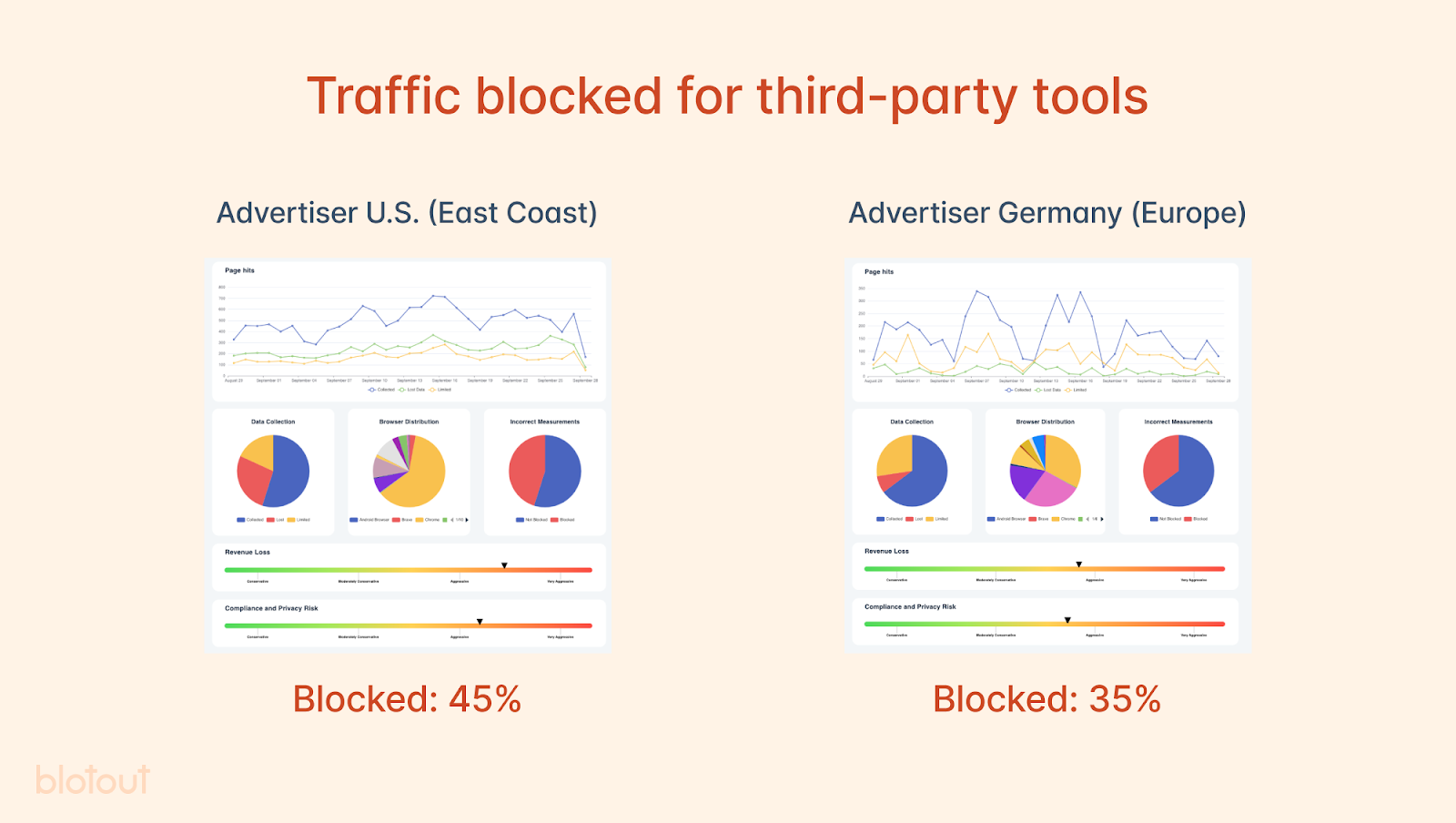.png)
First Published: 01 June, 2022
GDPR, CCPA, the Australian and New Zealand privacy acts and other national privacy laws introduced the fundamental right that data belongs to us, the consumers, in our changing digital world. For many years, enterprises, marketers, and product managers have ignored the issue of building trust with consumers about how their data is used. Now trust must be earned and utilized to be successful in business.
With Apple making aggressive consumer trust changes with iOS15 and the idea that 3rd party cookies and IDs are going away, enterprises have to change how they think about 3rd party SaaS, their growth strategies, and how they plan to comply with regulations.
Client-side advertising and marketing technology platforms are being hampered by changes to campaign performance tracking. There are 5 key elements in play:
Based on available data, in key markets, complete signal loss (data blocked completely from your platforms) is exceeding one in every five users. When factoring in iOS 15’s changes and the early expiration of cookies via Safari and Firefox - signal loss may be the norm rather than the exception in 2022.

Source: truetraffic.io
In addition to signal loss, there are other very visible examples of negative business impacts, such as, but not limited to:
To combat this, analytics and marketing data tools of today are becoming more and more sophisticated and advanced. Most companies depend on marketing and analytics tools that track users and silo data. This equals data loss, compliance risk, and weak customer relationships for businesses, with customer data often being lost or sent to 3rd parties.
Many organisations are currently spending lots of money and time ensuring all their information gets into one place, which can be difficult and time-consuming without the correct tools. The need for customer data platforms among corporations is rising with a CAGR of 24.5%, with the market expected to reach 4,364.7 million by 2027.
Some new technologies and vendors that are pushing the industry forward in addressing these concerns and providing solutions are….
If you’d like more information on customer data platforms we’ve covered this in a previous tech spotlight that can be accessed here
This is relatively new and emerging technology with few players such as the local NZ outfit “RescueMetrics” and a US based overseas player “Blotout”. These tools are less exhaustive and comprehensive than full blown CDP’s but are often simpler and designed to solve for more specific use cases such as signal loss prevention and cookie extension utilising server-side deployment, while CDP’s such as Tealium and Segment are a little different in the sense that they are designed to do this as well in addition to centralizing, unifying and activating all of the siloed data within an organisation.
RescueMetrics converts your failed third party data requests into successful first-party requests. It has been designed from the ground up to maximize signal quality in the browser while allowing customers to maintain their existing tools, workflows, and processes. It can be deployed with minimal engineering effort and automatically detects issues in the browser and protects against signal-loss issues without the need to rebuild tech stacks from the ground up.
Blotout’s EdgeTag is a privacy-preserving fix for lossy and non-consented Facebook data sharing. It uses a serverless app built with Cloudflare Workers that sends consented data to the Meta Conversion API directly from the customer’s domain. If you’re a Meta advertiser and want to meaningfully lower your cost per conversion by improving your ad targeting, you get: a consented conversion API that increases your campaign performance, a pixel delivered to Meta with a consent check and n auditable opt-out that deletes your customer data on Meta with an ID that lets you build audience lookalikes for the future.
While there may be some short term doom and gloom in the digital marketing industry at the moment, there is a very bright spot in some smart technology providers and vendors out there that are pushing the envelope in this space to find better solutions that deliver better results for your advertising investment in light of IOS15 (and other) tracking prevention tech, while still preserving privacy for the end customer.
It pays to retain a platform agnostic mindset to ensure you and your relevant team(s) are always aware, and apprised of such movements in the wider industry so you can take advantage of them as they come.
Adnan Khan Co-Founder and Managing Partner, Stitch
Chairperson, MA Digital Special Interest Group
Contact me here:
Email: adnan@stitchtech.co
Linkedin: https://www.linkedin.com/in/adnan2/

Contact us if you have any suggestions on resources you would like to see more of, or if you have something you think would benefit our members.
Get in TouchSign up to receive updates on events, training and more from the MA.
